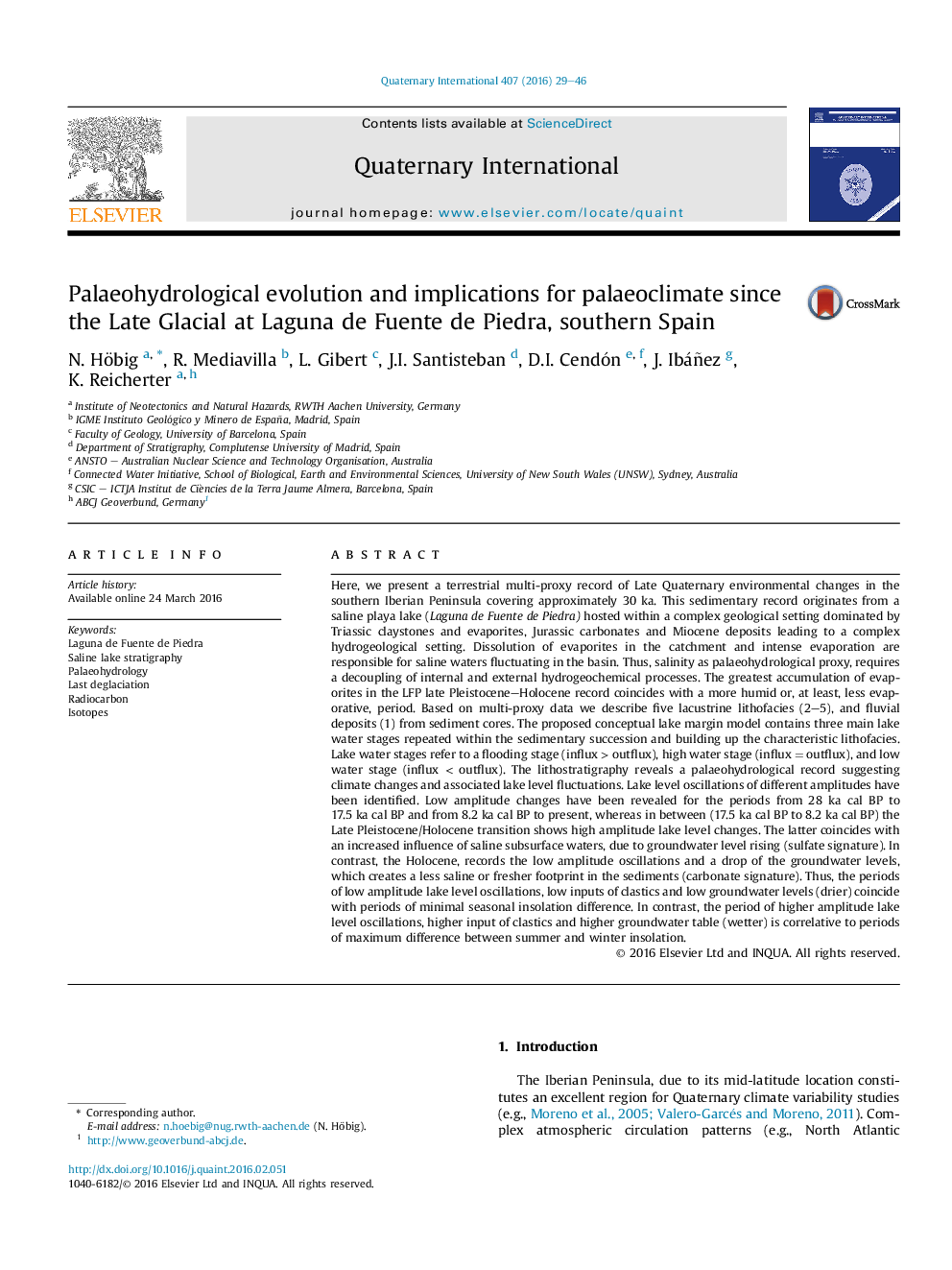| کد مقاله | کد نشریه | سال انتشار | مقاله انگلیسی | نسخه تمام متن |
|---|---|---|---|---|
| 1040039 | 944450 | 2016 | 18 صفحه PDF | دانلود رایگان |

Here, we present a terrestrial multi-proxy record of Late Quaternary environmental changes in the southern Iberian Peninsula covering approximately 30 ka. This sedimentary record originates from a saline playa lake (Laguna de Fuente de Piedra) hosted within a complex geological setting dominated by Triassic claystones and evaporites, Jurassic carbonates and Miocene deposits leading to a complex hydrogeological setting. Dissolution of evaporites in the catchment and intense evaporation are responsible for saline waters fluctuating in the basin. Thus, salinity as palaeohydrological proxy, requires a decoupling of internal and external hydrogeochemical processes. The greatest accumulation of evaporites in the LFP late Pleistocene–Holocene record coincides with a more humid or, at least, less evaporative, period. Based on multi-proxy data we describe five lacustrine lithofacies (2–5), and fluvial deposits (1) from sediment cores. The proposed conceptual lake margin model contains three main lake water stages repeated within the sedimentary succession and building up the characteristic lithofacies. Lake water stages refer to a flooding stage (influx > outflux), high water stage (influx = outflux), and low water stage (influx < outflux). The lithostratigraphy reveals a palaeohydrological record suggesting climate changes and associated lake level fluctuations. Lake level oscillations of different amplitudes have been identified. Low amplitude changes have been revealed for the periods from 28 ka cal BP to 17.5 ka cal BP and from 8.2 ka cal BP to present, whereas in between (17.5 ka cal BP to 8.2 ka cal BP) the Late Pleistocene/Holocene transition shows high amplitude lake level changes. The latter coincides with an increased influence of saline subsurface waters, due to groundwater level rising (sulfate signature). In contrast, the Holocene, records the low amplitude oscillations and a drop of the groundwater levels, which creates a less saline or fresher footprint in the sediments (carbonate signature). Thus, the periods of low amplitude lake level oscillations, low inputs of clastics and low groundwater levels (drier) coincide with periods of minimal seasonal insolation difference. In contrast, the period of higher amplitude lake level oscillations, higher input of clastics and higher groundwater table (wetter) is correlative to periods of maximum difference between summer and winter insolation.
Journal: Quaternary International - Volume 407, Part A, 2 July 2016, Pages 29–46